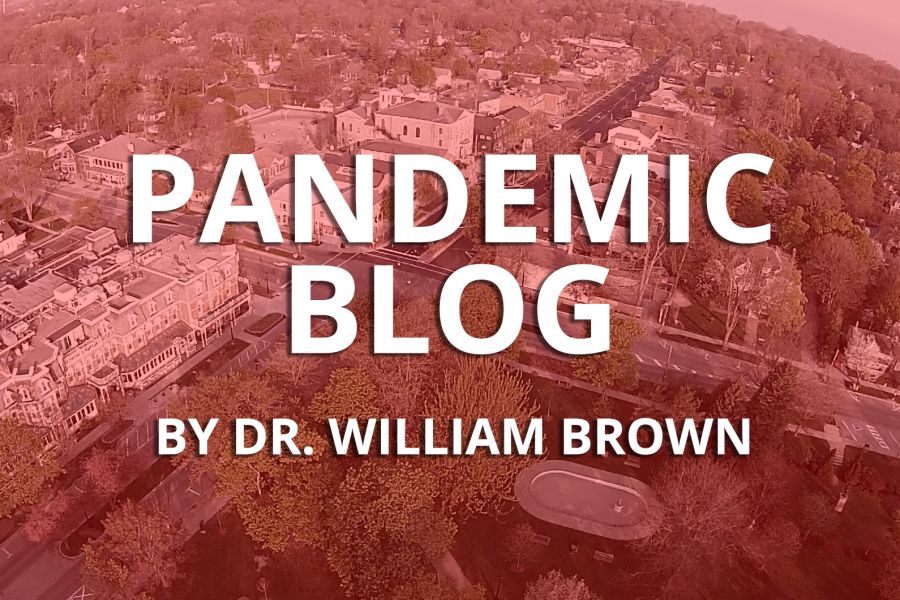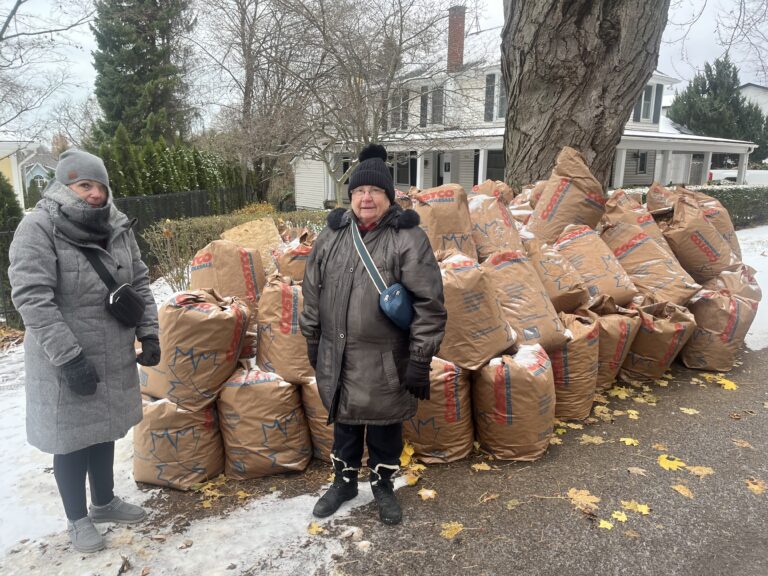Dr. William Brown is a professor of neurology at McMaster University and co-founder of the Infohealth series held at the Niagara-on-the-Lake Public Library.
Dr. William Brown
Special to The Lake Report
In late December of 2019, the first reports emerged from China about a new coronavirus genomically related to the SARS virus of 2003, which killed hundreds.
This version of the virus is much worse. Worldwide so far, 16 million cases have been confirmed and 650,000 people have died. Those figures clearly underestimate the true numbers of cases and deaths.
We’ve learned that this virus poses the greatest threat for the elderly, especially those in long-term care facilities and those with conditions such as obesity, diabetes and hypertension. The length and intensity of exposure to this highly infectious virus are also important: witness the number of front-line health care workers, even the healthiest among them, who were killed by COVID-19.
At the other end of the spectrum are the young, for whom infection may be associated with few, if any symptoms, but some of whom shed the virus for two to three weeks. On a more positive note, we learned that social distancing, wearing facemasks and avoiding crowds are effective in blocking the spread of the virus.
Why such different responses in susceptibility? Recent studies of several thousand patients in Italy and Spain revealed that there may be strong genetic links in severe COVID-19 cases such as one region in the genome that determines ABO blood types.
Other candidates include genes that encode for proteins related to the ACE-2 receptor on cell surfaces, sites the virus uses to gain access to the interior of cells. Yet other susceptibility genes appear to be related to the immune system. These and other genetic suspects are tantalizing smoking guns, but so far nothing definite.
What about the immune system? Most of the attention so far has focused on neutralizing antibodies that attack key components of the spike proteins of the virus, some of which proteins, by the way, are prime targets for several vaccines under development. At this point in the pandemic, key questions about the immune response to COVID-19 include:
How reliable and sensitive are currently available tests for detecting and quantifying neutralizing antibodies?
What is the correlation between antibody titre and severity of the disease?
How effective are neutralizing antibodies in defeating the disease: In the young? In older patients?
How long do neutralizing antibodies last?
What role do T-cells play in the response to COVID-19, both short- and long-term?
(In the young, T-cells mature in the thymus gland and play key roles in our resistance to viruses, bacteria and cancer. Unfortunately, the thymus gland begins to atrophy in midlife and much past the age of 70, from the perspective of the immunological system, the thymus no longer functions, even if a little fatty tissue remains.)
Much of the evidence bearing on the above questions has yet to be peer-reviewed, which might take several months, despite the willingness of many of the best medical journals to hurry up the process. The result is that we depend on interviews with “experts” on the CBC, BBC, PBS and newspaper articles written by reputable sources for much of our information. Less reliable has been information from politicians at all levels. And no surprise, social media has been the least reliable.
What about the possibility of new mutations arising which might make the virus more lethal? Fortunately, the genome of this virus has been tracked regularly as it marched around the world. And yes, COVID-19 continues to mutate but as yet, there’s no evidence of the emergence of a more lethal variants or strains that might be resistant to vaccines under development.
Of course, there’s always the possibly this virus might become less lethal, although it may well become a permanent resident of our species. Viruses, like bacteria, exploit in true Darwinian fashion, opportunities to keep going and so long as enough of us provide opportunities by travel and close contact, this virus will persist, as have the common cold and flu.
Then there’s the big question about the effectiveness of prospective vaccines. Here we simply have to wait.
Even the best vaccines won’t put an end to COVID-19. But if vaccines prevent the worst of the disease from developing in those most at risk, that would be a worthy achievement.
In the meantime, we’re learning just how effective changes in our behaviour – distancing and using masks – make to tamping down the transmission of this virus and probably the flu virus to come. I hope we don’t forget these hard-won lessons.









